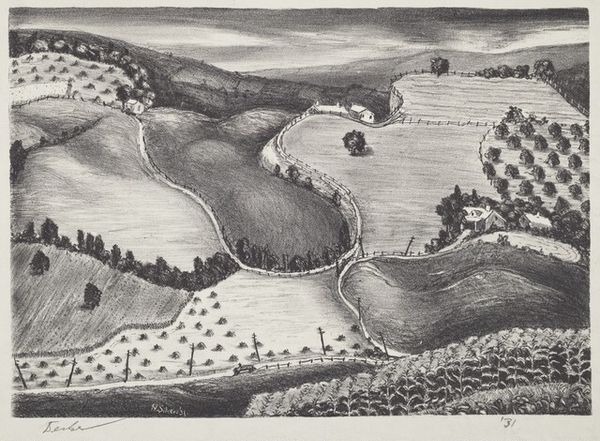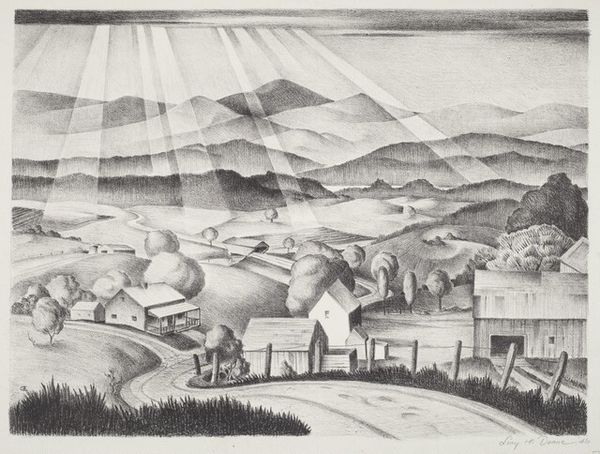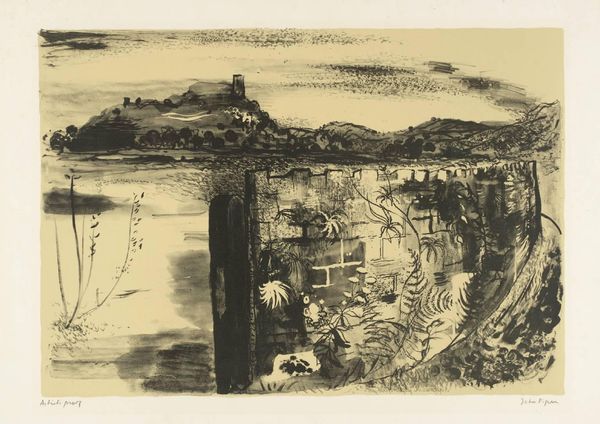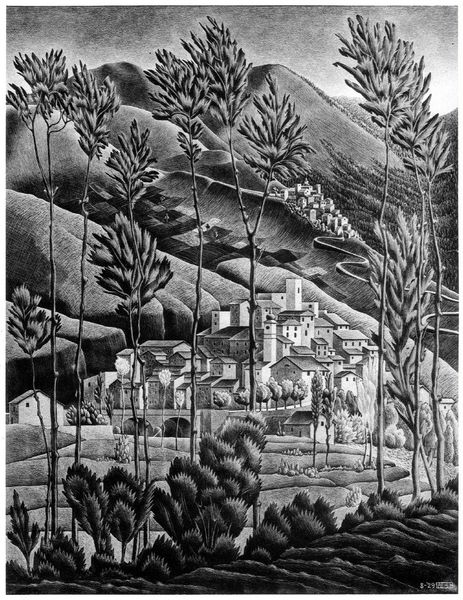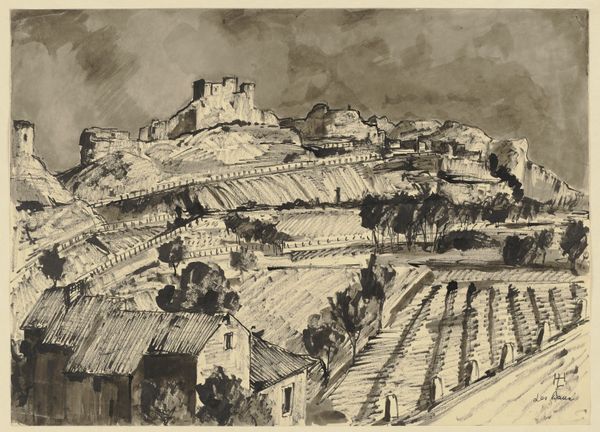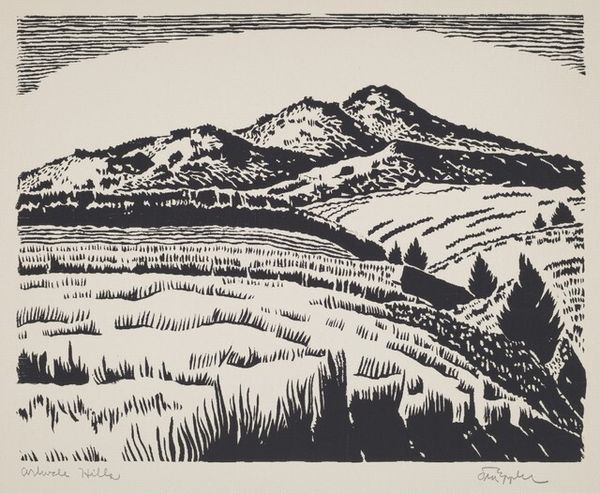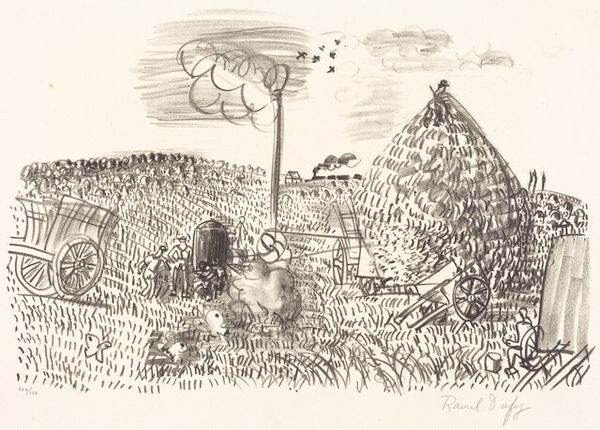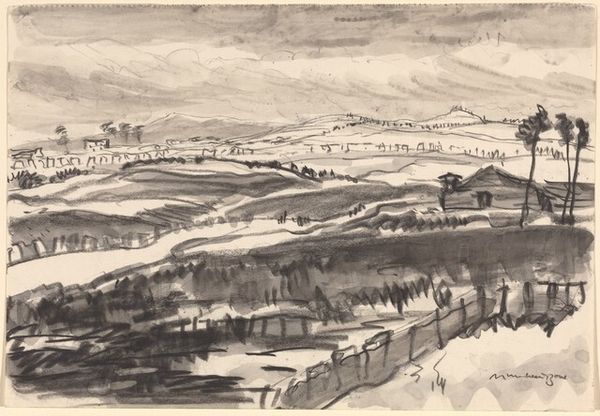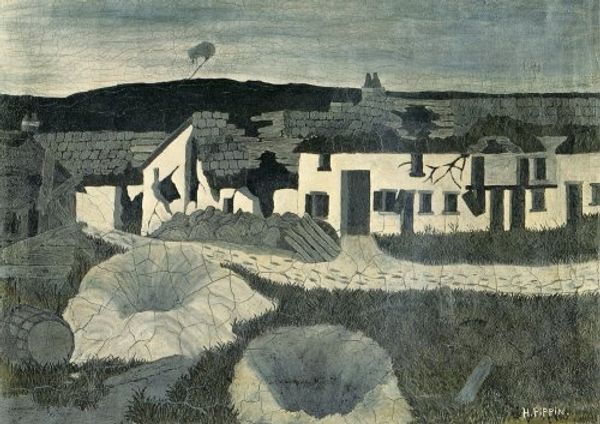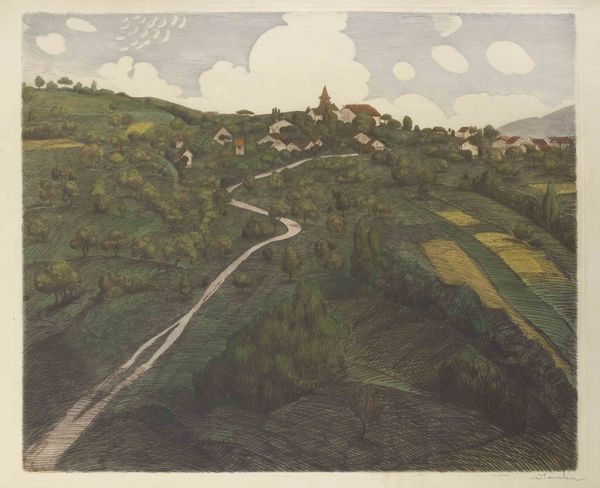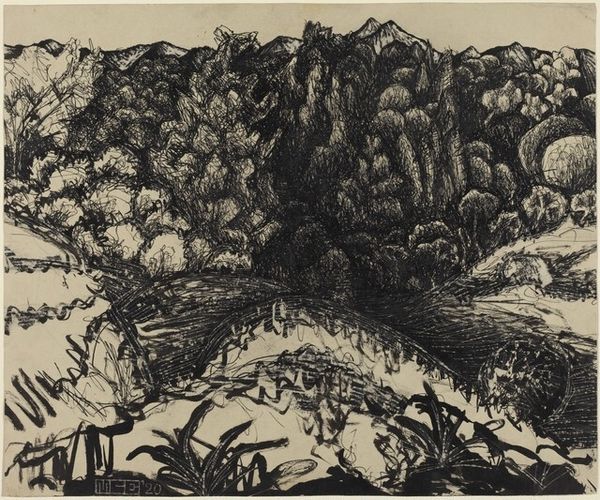
drawing, ink
#
drawing
#
landscape
#
ink
#
geometric
#
cityscape
#
modernism
Copyright: Public domain US
Editor: This is M.C. Escher's "Ravello III," an ink drawing from 1923. The detail is astounding, and yet the composition feels somewhat… unreal, like a memory gently warped over time. How do you interpret this work? Curator: I see a meticulously constructed world. Escher wasn't merely representing Ravello; he was channeling something deeper. The way he renders the landscape with such precision, almost geometric, speaks to a human desire to impose order upon the natural world. Do you see any repeated patterns? Editor: Yes! Especially the lines used to depict the fields, and the rooftops… even the clouds feel regimented. Is that a reflection of the time, a post-war desire for stability? Curator: Possibly. But I also see echoes of older traditions. The sharply defined shapes and the high vantage point remind me of medieval mapmaking, where the world was presented as a structured, knowable entity. It’s almost as if he's imbuing this Italian landscape with the weight of centuries of cultural memory. What sort of emotional response does that evoke for you? Editor: A sense of timelessness, I think, and maybe a slight unease. The beauty is undeniable, but there's something…rigid about it. It feels both familiar and strangely alien. Curator: Exactly! It captures that inherent tension: our need to both explore and control the world around us. Ravello, through Escher’s eyes, becomes less a place and more an idea about place. Editor: It’s fascinating to consider the deeper cultural layers within what I initially saw as a simple landscape. Curator: Indeed. Visual symbols often carry emotional and cultural echoes across generations, and that's certainly evident here.
Comments
No comments
Be the first to comment and join the conversation on the ultimate creative platform.

